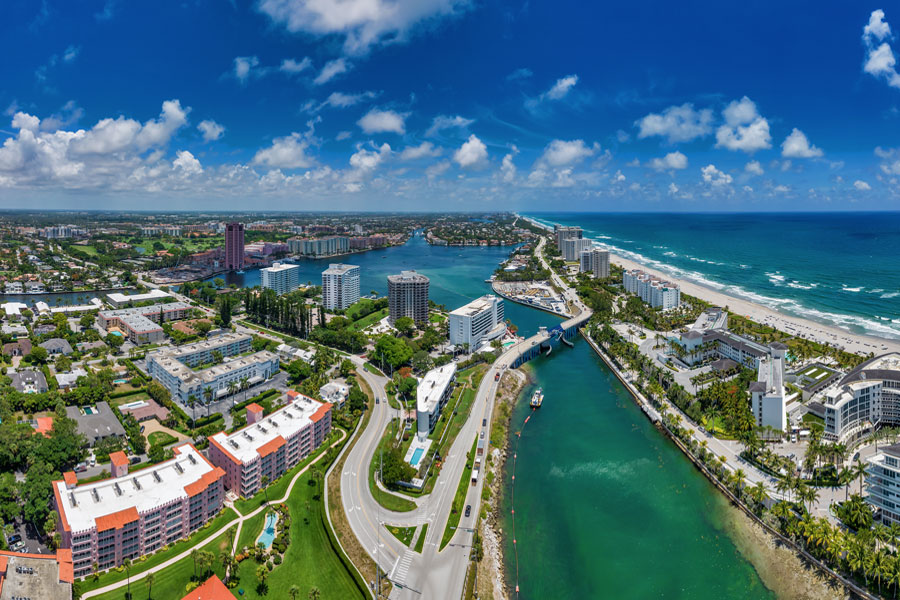Intracoastal Waterway: A Visitor’s Guide

The Intracoastal Waterway (ICW) in Florida is a marvel of natural and man-made engineering, offering a unique way to explore the Sunshine State’s stunning coastlines. Spanning Florida’s Atlantic and Gulf coasts, this navigable inland waterway is a haven for boaters, wildlife enthusiasts, and visitors seeking a one-of-a-kind adventure.
What is the Intracoastal Waterway?
The Intracoastal Waterway is a series of interconnected rivers, bays, and man-made canals that provide a protected route for maritime travel. Stretching from Fernandina Beach in the north to Miami on the Atlantic side and from Tarpon Springs to Naples on the Gulf Coast, it serves as a vital link for both commercial and recreational boating.
Discover the Geographic Scope
The ICW’s journey through Florida is as diverse as the state itself:
- East Coast: Starting near the Georgia border, the ICW passes historic towns like St. Augustine, the vibrant city of Fort Lauderdale, and the sparkling waters of Biscayne Bay in Miami.
- West Coast: On the Gulf side, it winds through picturesque locales such as Tarpon Springs, Sarasota, and Naples, offering a quieter, more laid-back atmosphere.
- The Keys Connection: The waterway also connects to the Florida Keys, providing a gateway to the tropical paradise of these islands.
Key Attractions Along the Intracoastal Waterway
- Scenic Views:
- Experience Florida’s natural beauty, from mangroves and sandy shores to small islands and pristine waterways.
- Top Stops for Visitors:
- Fort Lauderdale: Known as the “Venice of America” for its extensive canal system.
- St. Augustine: The nation’s oldest city, with rich history and colonial architecture.
- Biscayne Bay: A breathtaking expanse of turquoise waters near Miami.
- Indian River Lagoon: A biodiverse estuary home to dolphins, manatees, and countless bird species.
Boating and Water Activities
The ICW is a paradise for water lovers. Here’s what you can do:
- Boating: Rent a boat or bring your own to explore at your leisure. Numerous marinas and docks are available along the way.
- Fishing: Try your luck with inshore fishing for redfish, trout, and snook.
- Paddleboarding & Kayaking: Get up close to nature while gliding through calm waters.
- Guided Tours: Take a sunset cruise or an eco-tour to fully appreciate the waterway’s beauty.
Safety Tip: Always check for navigational markers and be mindful of bridge schedules when boating along the ICW.
Wildlife and Natural Beauty
The Intracoastal Waterway is a sanctuary for wildlife. Spot playful dolphins, gentle manatees, and a variety of bird species, including pelicans, egrets, and ospreys. Protected areas along the ICW, such as the Indian River Lagoon, provide critical habitats and a chance to connect with Florida’s natural wonders.
Recreational Opportunities
The ICW offers more than just water activities:
- Waterfront Dining: Enjoy fresh seafood at restaurants with dockside seating.
- Shopping: Quaint coastal towns and vibrant cities offer unique shops and markets.
- Festivals and Events: Experience local culture at waterfront festivals and seasonal celebrations.
Vicinity, East Coast
Vicinity, West Coast
Vicinity, The Keys

Practical Tips for Visitors
- Best Time to Visit: The ICW is accessible year-round, but winter and spring offer the best weather.
- Access Points: Utilize public docks, boat ramps, and marinas for easy entry.
- Navigation: Bring a detailed map or GPS device to navigate the waterway safely. Many apps offer real-time information on tides and bridge openings.
Why Visit the Intracoastal Waterway in Florida?
The Intracoastal Waterway offers an unmatched blend of adventure, relaxation, and scenic beauty. Whether you’re cruising through Fort Lauderdale’s canals, fishing in the Indian River Lagoon, or simply enjoying the serene views, the ICW is an experience like no other.
